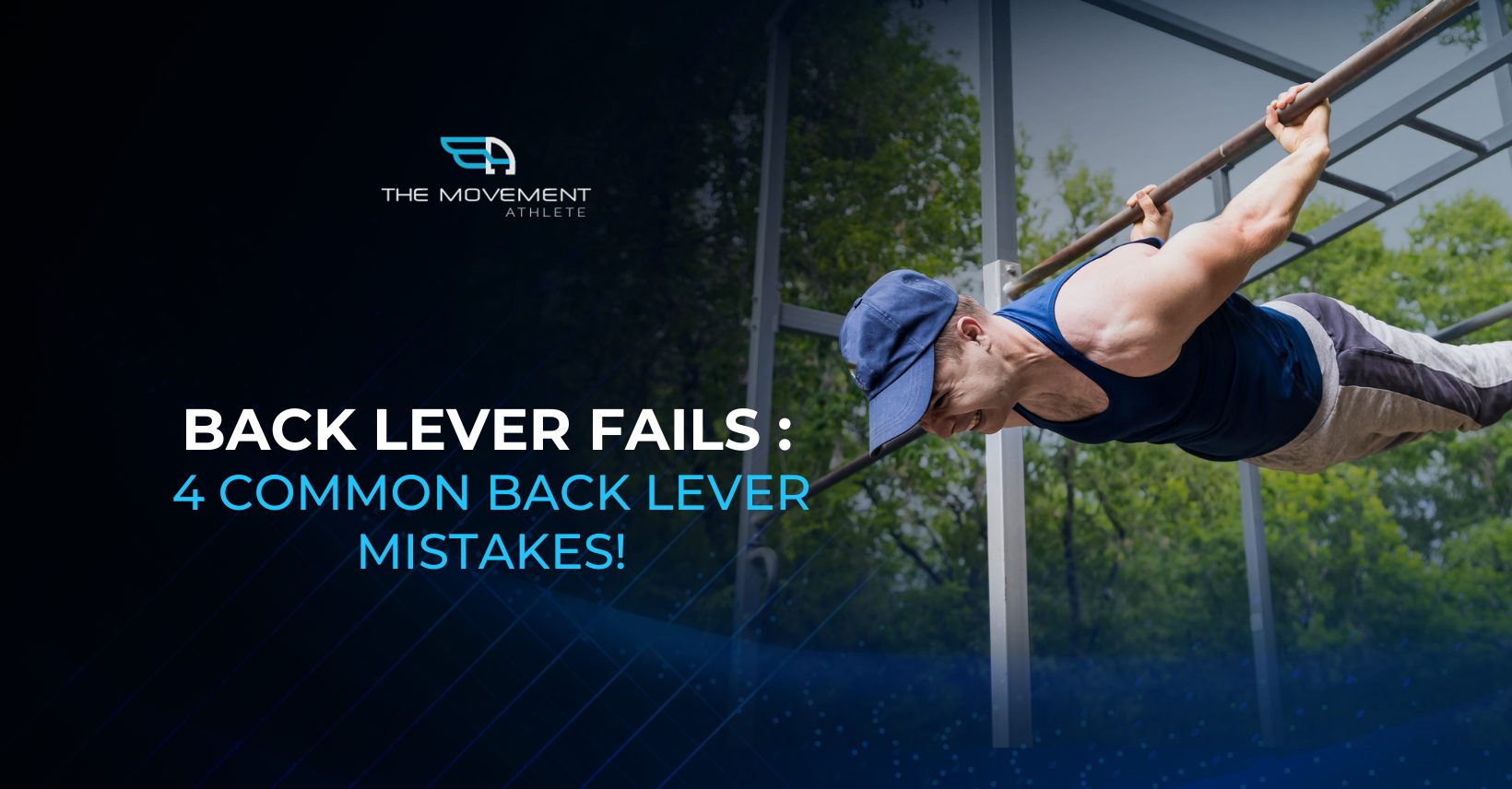
Join the tribe of Movement & Calisthenics Athletes – people just like you that are working with their own body weight to get strength, lose fat build muscle, recover from injuries and live their best lives!
Yes, that’s true! However, why do you need to learn from mistakes if you can avoid it right out of the bat!
In this article, we’re going to cover common back lever mistakes that can slow down your progress or, worse, cause injuries. We’re going to share the mistakes other people have experienced so you don’t need to pass through these pitfalls that can set you back in your back lever training.
If you’re interested in improving your back lever progress to an efficient and safe manner, then read on.
You can also watch it here: 📍Common Back Lever Mistakes 7 How to Fix Them
🔥What Can You Get From Training Back Lever Mistakes
So you might think that “Oh, everybody makes mistakes when learning. Why should I be scared of avoiding them?”
Well, performing mistakes in such an unusual position has its risks.
Here are some things you might encounter when performing repetitive mistakes.
Learning Bad Habits🥺
The back lever is still a skill. Repetitively drilling key elements and the move itself with proper technique not only improves progress and safety but also ingrains the correct posture and appearance of the back lever.
If you’ve been training the back lever with poor form for a long time, your body will have a hard time acquiring the proper technique. This involves the term muscle memory. The name is quite misleading because the “memory” is actually stored in your brain and not in your muscles. Building up the correct habits from the start helps you maintain the form as you progress in the skill journey.
Let’s say that you’re training the back lever with a retracted scapula (we’ll talk more about this later and why this is a mistake).🤛 Doing so will not strengthen the muscles in protraction and can lead you to less awareness if you’re in a protracted state.
Right from the start, when you’re training the basics, it’s best to focus on the correct form to create the good habits specific to the back lever.
👎Slow or Lack of Progress
If you’re getting frustrated with hitting a plateau in your training, it’s probably because of mistakes that you’re committing in your back lever journey.
Lack of progress is a subtle journey killer. If you do not see any improvements, you can easily get derailed and bored of your back lever journey. You might end up frustrated and eventually quitting the process.
Don’t let this happen to you!
🤕Injuries
All movements can lead to injuries. However, the more complex and difficult a skill is to learn, the higher the risk of injuries. This holds especially true if you’re doing too much too soon or performing an incorrect technique that’s putting too much unnecessary pressure unto your muscles and joints. The most common injuries you can get from the back lever are muscle tears in prime movers, such as the shoulders, biceps, and chest.
Take a step back and train smarter. Injuries can set you back for months or even years if you’re not smart in your training.
Take Note: The back lever is SAFE!
While the back lever poses some risks due to the loading on an unusual position, you can still pave a safe way toward learning this skill.
Like any other move, there are risks if you’re not prepared enough physically and mentally. Speaking of preparation, be sure that you already have a good level of the prerequisites of the back lever before attempting any of its specific progressions.
Learn more about the back lever prerequisites here: 📍Back lever Prerequisites – Muscles Used & Requirements
💥Mistake 1 – Retracting the Scapula
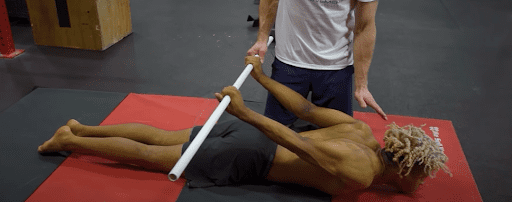
One big mistake that can cause you to lose so much in your form and proper strength gains is a retracted scapula position.
The ideal position for the back lever is a protracted scapula, where the shoulder blades are pushed away from each other. Due to gravity, you might find your scapula naturally retracts. You need to resist this tendency and push them apart.
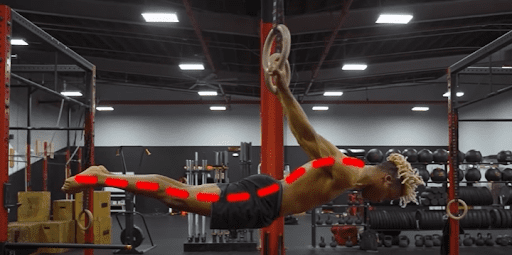
Protracted scapula offers maximum stability and potential to push down to sustain a horizontal back lever. When you’re performing a retracted back lever, it might cause a banana arching posture which doesn’t look good. It can also cause you to be not aware of the proper horizontal line due to the lack of force production. And because of the lack of force, you might not be optimally engaged that can lose your back lever attempts.
🌟How to Fix This
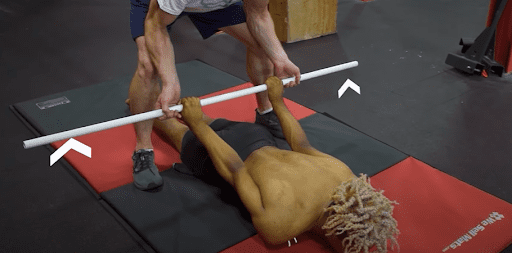
To address this mistake, we need to take a step backward into a lying back lever with a band or a stick. As mentioned in the prerequisite article: Back lever Prerequisites – Muscles Used & Requirements, this exercise simulates the back lever position with a much lesser strength requirement. So here, we scale back down the difficulty so we can first correct the proper scapula position into protraction. We can develop strength first in this area.
There are two common causes for the retracting scapula. The first is a lack of strength, and the second is just a lack of awareness to engage the correct muscle groups properly. By performing the exercise above, we can fix this issue. As we master this element, we can use the lying back lever lifts to build muscle and strength further.
💥Mistake 2 – Weak Back and Glutes
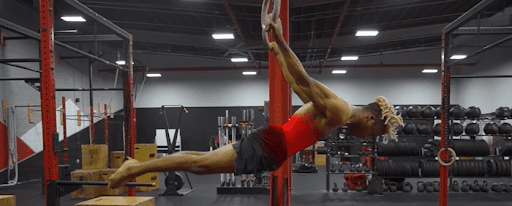
A commonly neglected area in the back lever is the posterior chain from the lower back down to your legs. Because the back lever is primarily an upper-body exercise, people tend to forget to build specific strength for the lower back, glutes, and hamstrings. This leads to an arching lower back, piked hips, and a loose and disengaged lower half of the back lever. Remember that the whole body should be in a straight line. Weakness in the lower body will lead to a crooked back lever, similar to the photo above.
In addition, this can lead to general muscle imbalance causing posterior chain tightness and chronic aches and pains that many people unfortunately endure.
🌟How to Fix This
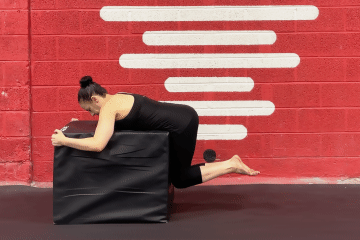 Box Straddle Extension
Box Straddle Extension
We can fix a weak posterior chain that’s specific for the back lever using the box extension exercise. This exercise targets the glutes, hamstrings, and lower back while mimicking the lower portion of the back lever. Box extensions can fix the back lever and help you achieve a healthier posterior chain by strengthening and mobilizing these areas.

The exercise is scalable depending on your skill level. You can use different back lever body positions such as the tuck, advanced tuck, half lay, and full. You can also play around with difficulty by holding the top position for an additional challenge. Choose the proper body position that works for your skill level.
💥Mistake 3 – Not Engaging the Lats
While the commonly talked about prime movers are the chest, anterior shoulders, and biceps, the latissimus dorsi, AKA lats, also play a crucial role in stabilizing your whole body in the horizontal position. Not to mention activating the scapula and achieving the shoulder-extended position.
To tell if you’re not actively engaging your lats, take notice of your lats and triceps. You should be squeezing your triceps to your lats to activate them. Your lats become like a shelf where you can passively hold and rest the triceps to maintain the horizontal position. This is why the back lever is relatively easier than the front lever, technique-wise. Yes, you can execute a solid back lever without this technique, but it will be much more difficult.
🌟How to Fix

Fixing this issue is more straight forward. You need to prepare and set the lats and triceps in the correct position from your starting inverted hang before you lower your body into the back lever. Squeeze the lats and triceps together in the inverted hang to set you in the correct position.
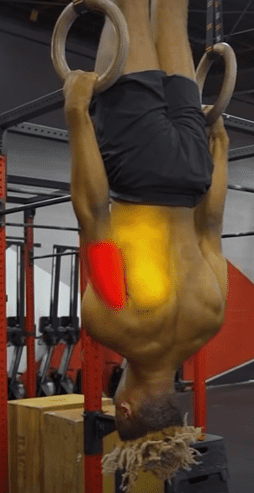
Then you can slowly lower in while maintaining position. You don’t have to go all the way into the back lever yet. Gradually build a good level of comfort with your lats and triceps squeezed together. Make sure you’re feeling the contact while performing a limited range of lower downs.
Lack of lats engagement just stems from a lack of awareness and cueing. It’s easily corrected with exercise. Now if you can’t feel it or still finding a hard time using this exercise, you make this exercise by regressing back in the lying back lever with lifts. While focusing on the protection with the exercise, also be aware of the lat and tricep engagement.
☝️Tip – Progressing too soon
If you’re unable to hold a back lever progression for 8 seconds, then you’re probably performing it too soon.
In the calisthenics community, it’s commonly perceived that 2 seconds of an isometric hold is roughly equivalent to 1 rep. So in our minimum “rep range” for the back lever, we’re targeting 4 reps which is a good training volume for high-intensity exercise.
Progressing too early into the next exercise can lead to frustration of performing low-quality execution or poor hold time.
🌟How to Fix
This is simple. Set your training with humility. Take a step back. Accept the fact that you might still need some time to work on the basics or easier progression before moving forward.
Strength and muscle takes time to develop. On top of that, adding a skill component will further push back that progress.
Beginners might find progress fast, because of the “noob gains”. But once you get past that beginner’s phase, that’s when the real test begins.
Stay patient with your training, and you will progress as long as you gradually maintain the progressive overload.
💥Mistake 4 – Not Warming up Properly
A common mistake people make that stems even before your workout starts is not doing a proepr warm-up session.
There are three common flaws in people’s warm-up routine.
The first flaw is when people do to little. Let’s face it. Sometimes, warm-up feels boring. Even if you’re doing a proper warm-up routine, but just going through the motions and not being mindful with the movement, you might not be getting the most from the warm-up.
The second flaw is when people do too much. Your warm-up should just be sufficient enough to prepare your body for movement. It should get tired from your warm-up as this will negatively affect your training.
The third flaw is when people don’t get specific enough with the workout. This happens when athletes’ do random warm-up exercises just for the sake of “warming up”. Yes, a general movement pattern could serve you well in increasing your heart rate. However, it might not be suffcient enough to direct blood flow towards te specific muscle groups you’re going to target in your main warm-up.
🌟How to Fix
All workout should start with a proper warm-up routine that’s geared towards the primary workout.
A cold body isn’t conditioned to move. The blood doesn’t flow efficiently to supply your body the much-needed nutrients and energy to maintain the challenging movements. Joints aren’t libricated enough to move through a wide range of motion.
A proper warm-up is great for injury prevention and as well as maximizing your body’s capacity to move and perform so you can squeeze the most from your workout. A good warm-up will:
- ✅ Improve blood flow and heart rate
- ✅ Set your mind and body for movement
- ✅ Lubricate joints for an increase in range of motion
- ✅ & Activates specific muscles with a lighter loading to prepare you for your specific movement
This is just the gist of it, but there are even more reasons and good benefits of doing a good warm-up. In fact, a systematic review show that warm-up produces improvements in the main workout performance.
Based on the mistakes above, you might get overwhelmed and think that a warm-up should be complex.
But it shouldn’t be. Keep it simple.
Learn more on how to warm-up properly for the back lever in this section: 📍Back Lever Warm-up Routine: How to Get Started in 12 Minutes for your Workout!
📌Takeaway
Mistakes are great learning tools, but you can also easily learn the mistakes from different sources and not first-handedly, especially if the potential consequence are injuries.
Injuries can be avoided in your back lever training, even if seems like a high-level exercise such as the back lever.
Choose the smart approach when learning the skill to avoid injuries and make fast progress. Be sure to check out the back lever article on how to avoid injuries below.
Read here: 👉 How to Avoid Injuries When Training for Back Lever